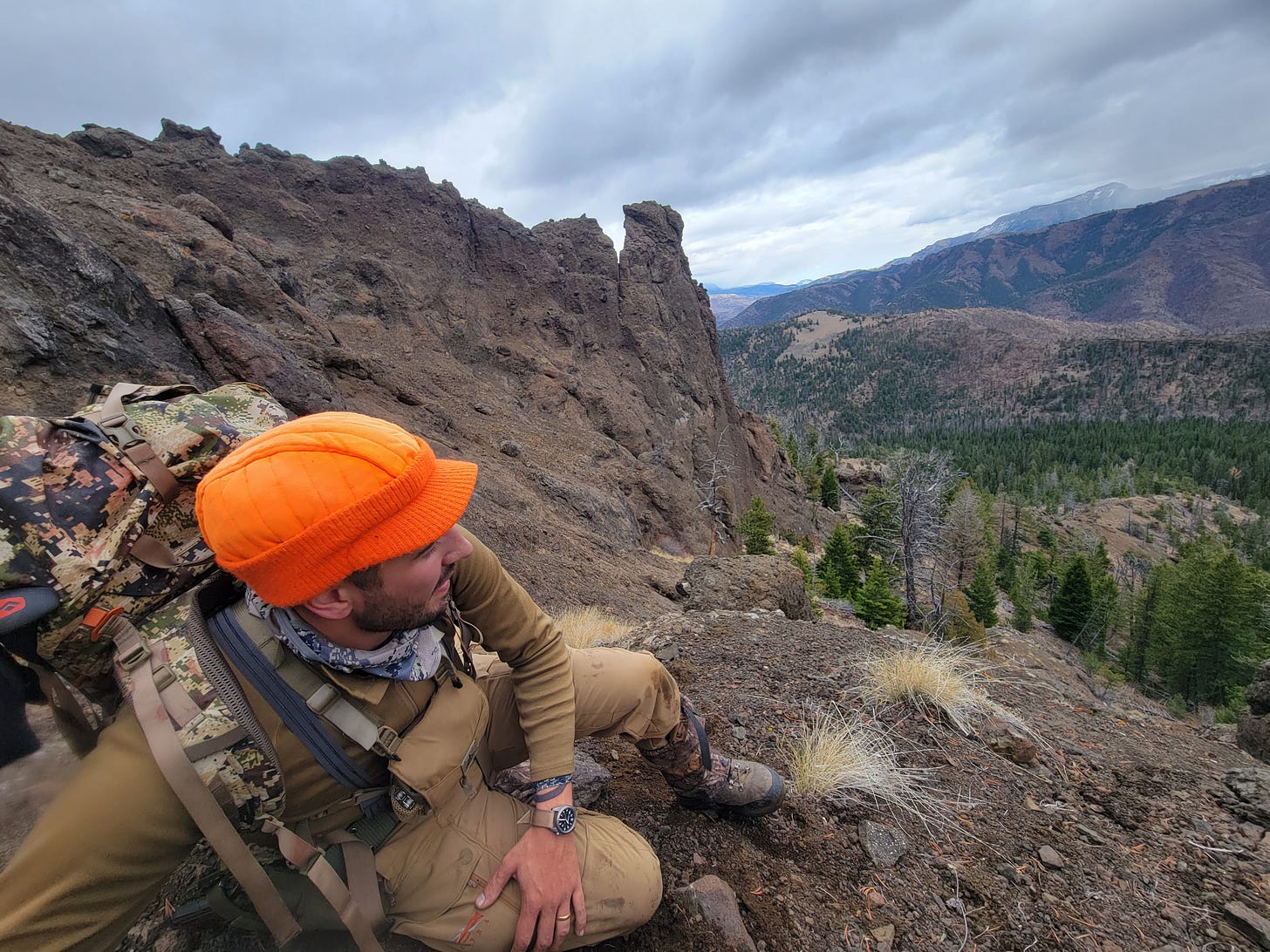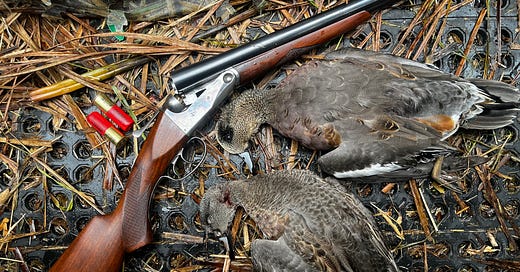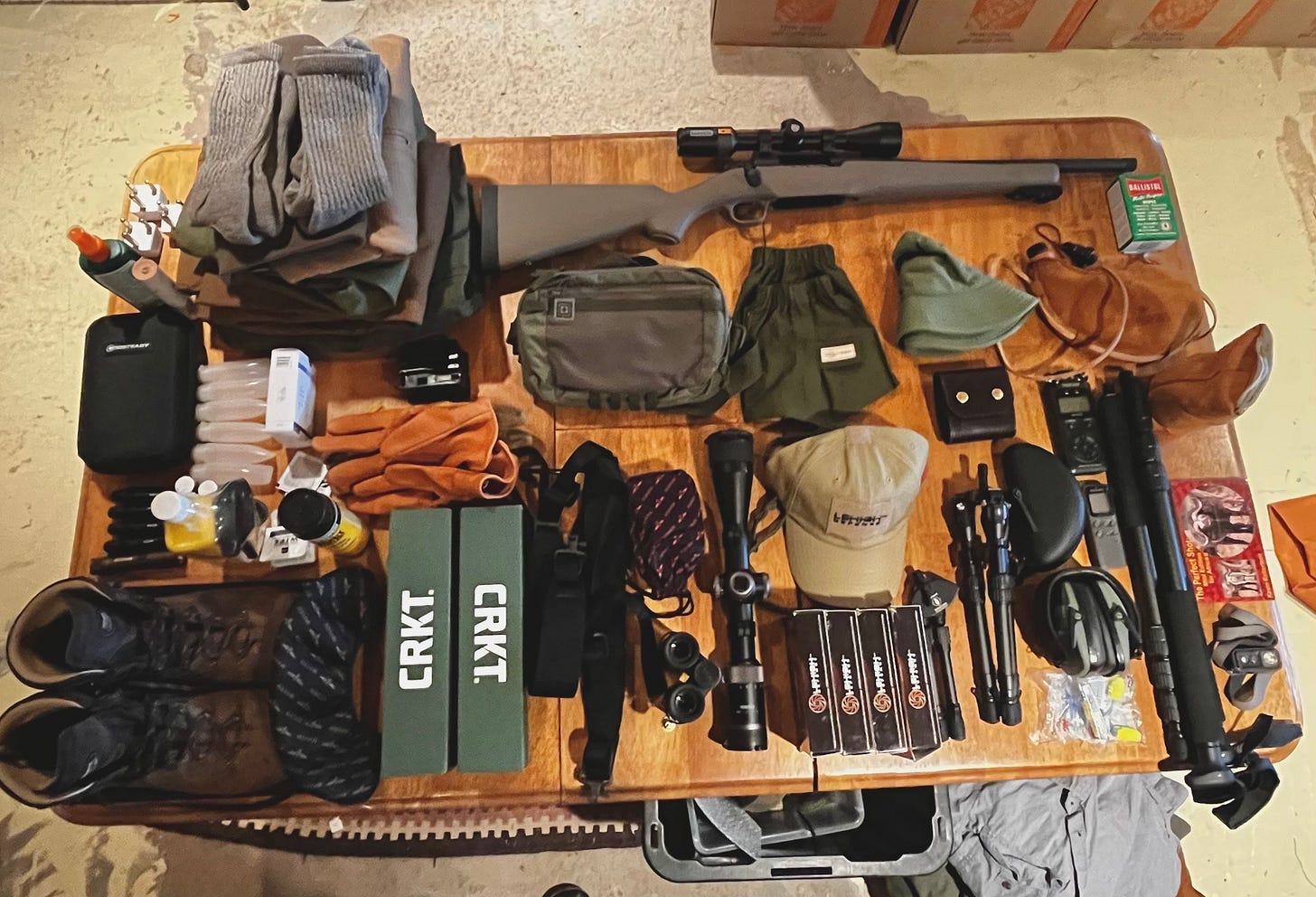I’m getting ready for duck season right now. Part of that entails laying out the gear. It’s something I do every season. But that doesn’t mean I’m one of those type-A organized people with shelves of neatly filed plastic totes, all labeled and alphabetized.
Figuring out how to store your gear is a lot like figuring out how to arrange a bookshelf. It says a lot about you, and I’m trying to figure out what my mess of equipment says about me.
I’ve made attempts at organization. Right now, my things are spread between three buildings, one travel trailer, and one very dirty pickup truck. Part of that is due to life circumstances too complicated to go into here. But for as long as I can remember, I’ve had many things, and those things have been scattered all over the place.
In my head, I’ve designed the perfect system. It looks like this: One wall of shelving for bins, all the same kind of bin, filled with bulky gear like binoculars and thermoses.
Then there’s a workbench, where I could reload ammunition and fix things that need fixing. I’d have a place to carve and maintain decoys and a stack of drawers underneath the bench for the small stuff, like hunting knives and turkey calls. Finally, I’d have one big table in the center of the room where I could lay everything out before a trip.
The reality is close but still very different. It’s an amalgamation of cardboard and plastic boxes with hastily scribbled labels like “HUNTING JACKETS” or “BUTT PADS.” (Butt pads are for sitting on in the woods, if you’re wondering.) When I get back from hunting, I usually dump random things in those labeled boxes, rendering their labels meaningless.
But I haven’t given up hope, and I think I’ve figured out the solution to my gear woes. I need to get rid of stuff.
Before I worked in the outdoor industry, I was on the fringes, looking for a way in. I remember as a hunting guide, one of my clients tipped me $400 with the instruction to buy better hunting clothes. He’d been looking at what I was wearing all week, and it compelled him to be charitable.
At the time, I had a down jacket covered in duct tape to keep the feathers in and a pair of Army surplus pants that were pretty cold when temperatures dropped below zero. My boots looked more like beef jerky than leather, and my binoculars stayed cloudy all the time.
I was starving for gear to protect me from the elements or make the load on my back a little lighter. So when I got the opportunity and a bit more money, I went crazy.
The funny thing is, the more gear I get, the less time I actually spend in the woods. I have several tents I’ve only slept in once, yet I’ve spent more time in one I got as a Christmas gift years ago than I’ve spent in some houses.
The knives have really gotten out of hand. I remember I only needed an Opinel No. 08 for all of my skinning and field dressing tasks. Now, I have a knife for every cut I make on a deer and several more for grouse, ducks, and rabbits.
But how do you narrow it down? I was having a hard time figuring this out until recently. I interviewed a Tanzanian Professional Hunter for Field & Stream who takes clients out mostly for Cape Buffalo. You’d think someone hunting dangerous game would have a gear arsenal, but she’s been carrying the same few items for years. She has one rifle, a 458 Lott named Ishmael, one pair of binoculars, a pocket watch for keeping track of time, and two good boots.
When I asked her why she’s held onto these things year after year, she told me that it’s more a question of whether they’re holding onto her. She said “They are my witnesses,” and I immediately knew what she meant.

Gear is just stuff taking up space until you’ve brought it somewhere and done something with it. The more of it you have and the more you change it up, the fewer chances you have for these objects to grab hold of you.
The part about this hunter’s tools being her witnesses really stuck with me. Most of the time, I’m alone in the woods, and I wish I could share some of the things I see with the people I care most about. But I know that those opportunities are rare.
Instead, I have the things I carry, and hopefully, some of those things will take on their own character, sort of like the slow burn of a good friendship. But I’m still left with a pile of shiny new objects, like I’m some junkie magpie who’s scooped them up with no idea of how to use them.
We’re a long way from New Year’s resolutions, which usually die anyway, but I feel safe to say that I will do some editing. My first step will be to scour my belongings, look for patina, and save the things I’ve used the most. I want to find the leather that’s dry and cracked around the edges or the bare metal peaking through the bluing. I need the boots that no longer have lug soles and the sun-bleached hats stained with sweat. That thermos with a dent in it. Or that down jacket with a duct tape patch.
Those things that have the most wear are the things that mean the most to me——whether I like it or not. They may not work as well as the newer stuff, but they are my witnesses.







Beautifully written and poignant. I too find that my older equipment has meaning and spirit in it. Although I may buy a new piece from time to time, I can’t depend on the old stuff like a loyal friend. Well done!
I like the idea of gear being a witness. My go-to fly rod is an old 5wt that’s landed fish all over the country. The finish is peeling and only the ferrules are unbleached by the sun. It’s become a companion.